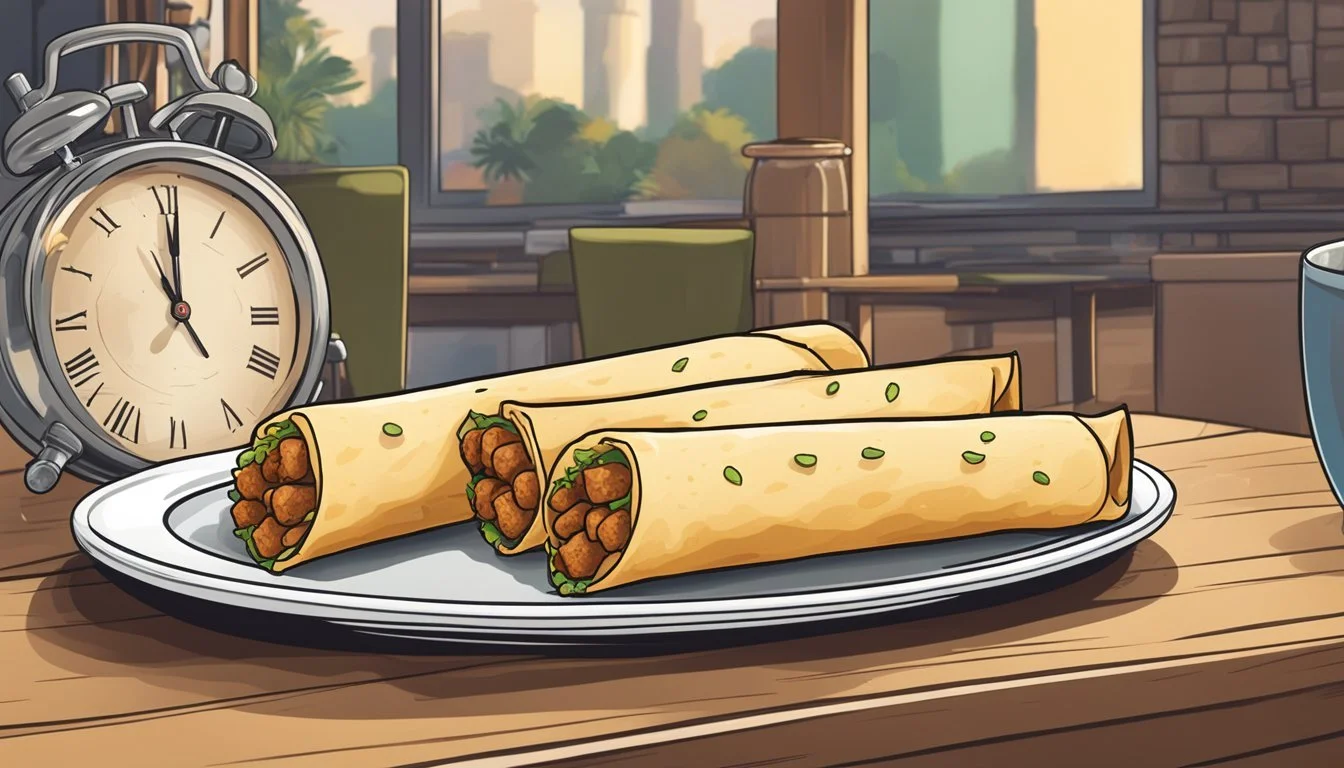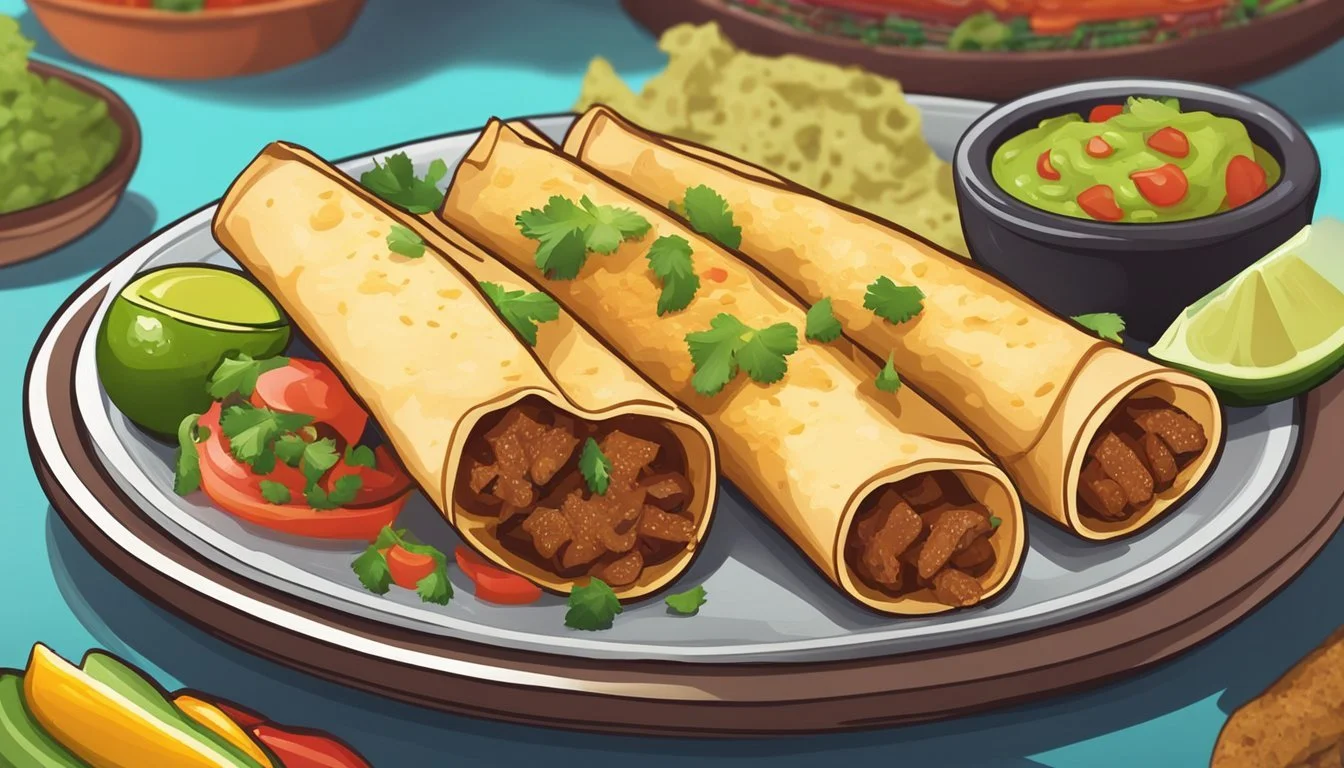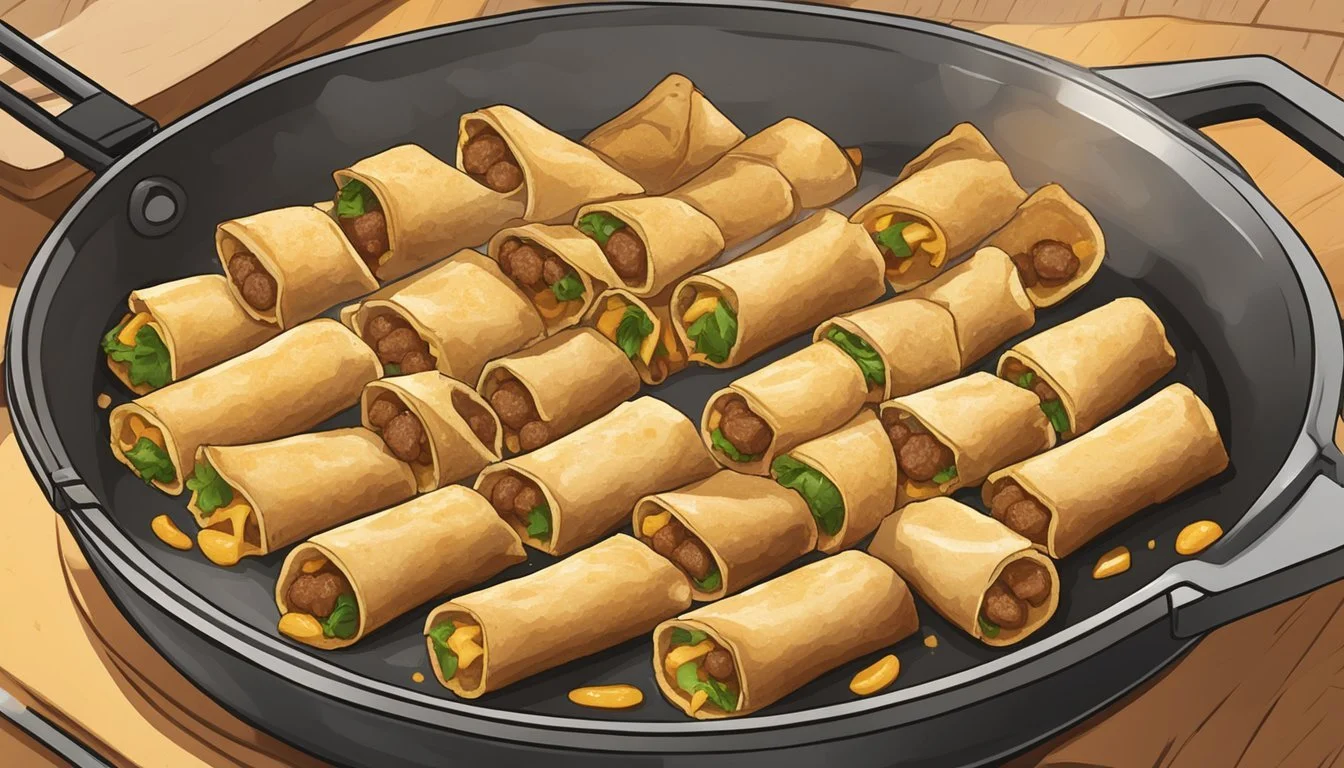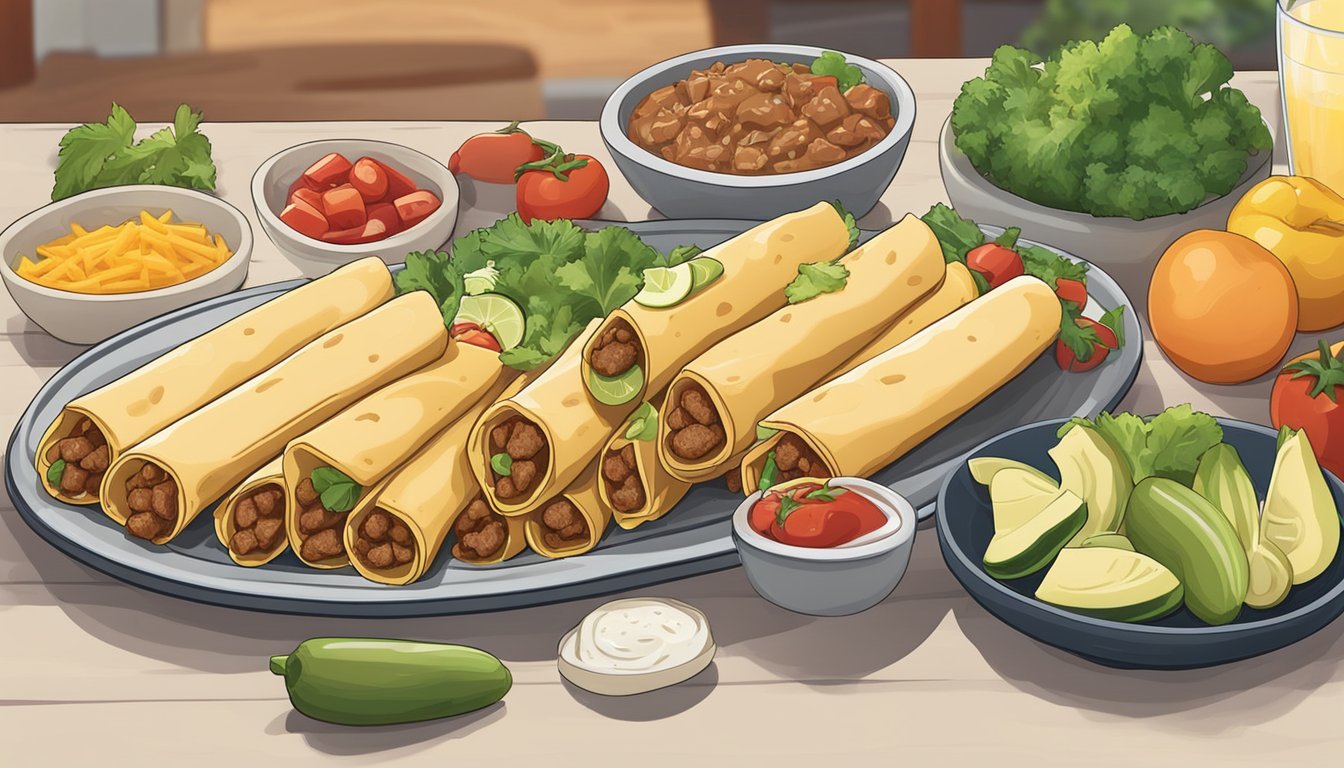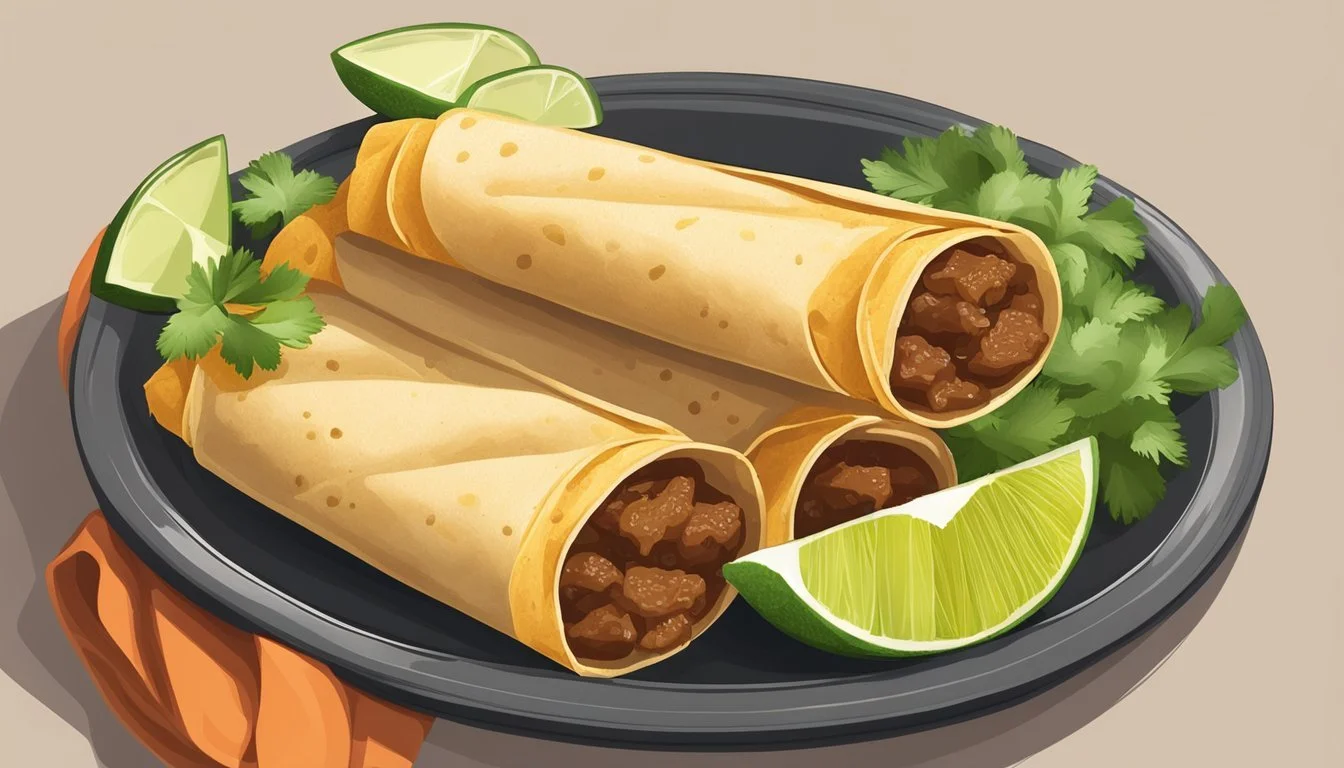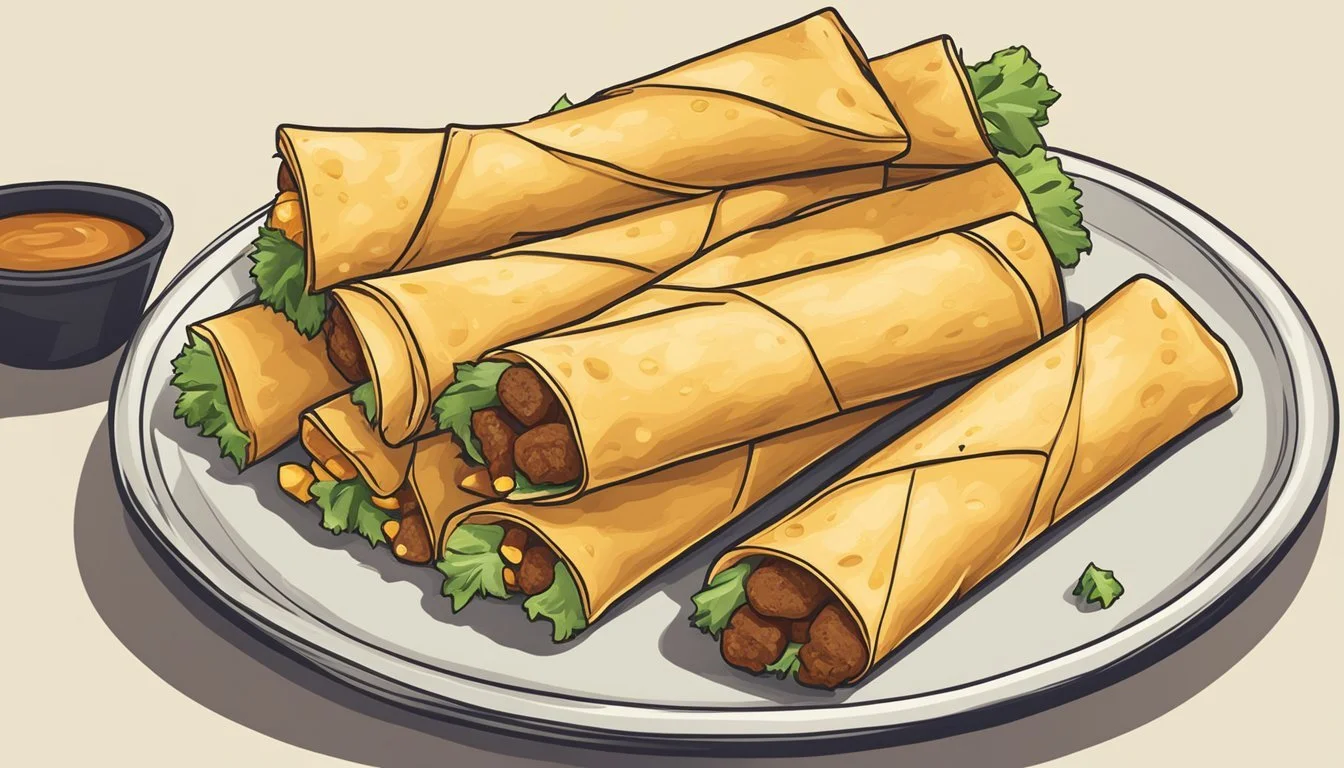How Long Do Beef and Cheese Taquitos Last?
Storage Tips and Shelf Life
Beef and cheese taquitos are a delicious and convenient snack that many people enjoy. Whether baked or fried, these savory treats combine juicy beef and melted cheese in a crispy tortilla shell. When stored correctly, beef and cheese taquitos can typically last up to 3-4 days in the refrigerator. It's essential to ensure they're kept in an airtight container to maintain freshness and prevent contamination.
For those looking to extend the shelf life of their taquitos, freezing is a great option. By placing the taquitos in a freezer-safe bag or container, they can be stored for up to three months without losing their flavor and texture. Reheating is simple, whether you opt for the oven, microwave, or air fryer, making them a convenient choice for quick snacks or meals.
Understanding the best practices for storing beef and cheese taquitos not only helps in keeping them safe to eat but also ensures that you can enjoy their delectable taste whenever a craving strikes. Always remember to check for signs of spoilage, such as an off smell or unusual texture, before consuming stored taquitos.
Understanding Taquitos
Taquitos are a popular Mexican dish often made with tortillas filled with various ingredients. The choice of tortillas and proteins plays a significant role in their preparation.
What Are Taquitos?
Taquitos are a traditional Mexican dish consisting of small, rolled-up tortillas filled with ingredients like beef, chicken, or cheese. These filled tortillas are then fried or baked until crispy. They are typically served with toppings such as guacamole, sour cream, or salsa. While originating from Mexico, taquitos have become popular worldwide due to their delicious and versatile nature.
Comparing Corn and Flour Tortillas
Corn tortillas and flour tortillas are the most common choices for making taquitos. Corn tortillas are made from masa harina (corn dough) and are gluten-free, which appeals to those with dietary restrictions. They provide a slightly chewy texture and a robust corn flavor. On the other hand, flour tortillas, made from wheat flour, are softer and more pliable, making them easier to roll without breaking. Each type of tortilla brings a unique taste and texture to the taquito, affecting the overall flavor profile.
Feature Corn Tortillas Flour Tortillas Texture Chewy, slightly firm Soft, pliable Flavor Robust corn Mild wheat Dietary Gluten-free, traditional Contains gluten, versatile
The Role of Protein in Taquitos
The choice of protein in taquitos significantly influences their taste and nutritional value. Common proteins include beef, chicken, and cheese. Beef is often shredded after slow cooking, which allows it to absorb rich flavors. Chicken, usually cooked and shredded, offers a leaner option. Cheese, often combined with meats or used alone, adds creaminess and depth of flavor. Selecting the right protein is crucial for achieving the desired taste and texture, making each bite enjoyable.
By understanding the basics of taquitos, the differences between corn and flour tortillas, and the role of proteins, one can appreciate the nuances that go into making this delightful dish.
Ingredients and Variations
Beef and cheese taquitos can be customized in numerous ways. Different fillings, cheeses, and accompaniments can enhance the flavor and cater to various dietary preferences.
Common Fillings
The classic filling includes ground beef seasoned with spices like chili powder, cumin, and garlic powder. Chicken is another popular option, often shredded and spiced similarly to beef. Vegetarian options may include beans such as black beans or refried beans, which provide a hearty texture.
Corn tortillas are typically used for an authentic taste, while flour tortillas offer a slightly different texture and flavor. Both options work well depending on personal preference.
Choosing the Right Cheese
Cheese is crucial for a rich and creamy filling. Shredded cheese blends like Mexican cheese blends, cheddar, and Monterey Jack are common choices. These cheeses melt well and complement the spices and other ingredients.
Queso fresco or cotija can be sprinkled on top after baking for added flavor and a bit of tang. The type of cheese used can greatly alter the taste profile of the taquitos, making it an important consideration.
Vegetarian Alternatives
Vegetarian taquitos replace meat with ingredients like black beans or refried beans. These fillings provide a similar hearty texture and are often flavored with the same spices as meat-based taquitos.
Adding vegetables such as corn, peppers, and onions can enhance the flavor. Guacamole, sour cream, and salsa also make great accompaniments, offering refreshing contrasts to the rich filling.
Creative Toppings and Sides
Toppings and sides can transform taquitos into a complete meal. Popular toppings include pico de gallo, shredded lettuce, jalapeño slices, and cilantro. Each adds texture and freshness.
Sides like guacamole, sour cream, and different types of salsa offer additional layers of flavor. Mexican crema or a squeeze of lime juice can provide a finishing touch, balancing the flavors with a bit of tanginess and creaminess.
Cooking Techniques
Beef and cheese taquitos can be prepared using various methods, each offering distinct advantages in terms of texture and convenience. Key techniques include oven baking, pan frying, and air frying.
Oven Baking
Oven baking is a popular method for preparing taquitos, allowing for even cooking without excess oil. Preheat the oven to 375°F (190°C) and line a baking sheet with parchment paper. Place rolled taquitos on the sheet and lightly spray them with nonstick cooking spray to promote crispiness. Bake for about 20-25 minutes, turning them halfway through to ensure they become golden brown on all sides. The result is a crispy, healthier version of taquitos that retain their savory filling.
Pan Frying
Pan frying provides a traditional, rich flavor and crispy exterior. Heat a skillet over medium-high heat and add a generous amount of oil. Once the oil is hot, place rolled taquitos in the skillet, ensuring they don’t overlap. Fry for 2-3 minutes on each side until golden brown. Use a toothpick to secure the taquitos if they tend to unroll during frying. Drain on paper towels to remove excess oil before serving. This method yields a deeply flavorful and crispy taquito.
Air Frying
Using an air fryer offers a balance between the health benefits of baking and the crispiness of frying. Preheat the air fryer to 350°F (175°C). Arrange the rolled taquitos in the fryer basket in a single layer, avoiding overcrowding. Lightly spray with nonstick cooking spray. Air fry for 10-12 minutes, turning halfway through to ensure even cooking. This method results in a crispy and lower-fat alternative to pan frying while maintaining a delicious texture.
Storage and Preservation
Beef and cheese taquitos can be stored in different ways to extend their freshness and flavor. This ensures that leftovers maintain their quality for future meals.
Refrigerating Taquitos
Refrigerating taquitos is a common method for short-term storage. Place the taquitos in an airtight container or wrap them tightly in aluminum foil or plastic wrap. Properly refrigerated, they can last for up to 3-4 days. Ensuring that the taquitos are cooled to room temperature before refrigerating prevents condensation, which can affect texture.
Tip: Label the container with the date to keep track of how long the taquitos have been stored. This practice helps in managing leftovers efficiently.
Freezing and Reheating
For longer-term storage, freezing is an excellent option. First, lay the taquitos on a baking sheet in a single layer and freeze them until solid. This prevents them from sticking together. Once frozen, transfer the taquitos to a zip-lock bag or an airtight container. Label with the date.
Frozen taquitos can last up to 2-3 months. When ready to eat, reheat them directly from the freezer in a preheated oven at 375°F (190°C) for 15-20 minutes or until heated through. This method helps retain their crispiness.
Best Practices for Maintaining Freshness
Maintaining freshness involves a few key practices. Always use fresh ingredients when making taquitos, as this impacts the longevity of the stored product. For best results, ensure taquitos are stored in containers that minimize air exposure, such as vacuum-sealed bags.
Storing taquitos in smaller batches can also help maintain quality by reducing the need to repeatedly open and close containers. Furthermore, reheating in an oven or air fryer, rather than a microwave, helps preserve their texture.
These steps collectively ensure your beef and cheese taquitos stay delicious and safe to eat for as long as possible.
Nutrition and Dietary Considerations
Beef and cheese taquitos can be part of a nutritious diet, but it's important to look at their calorie and fat content as well as potential gluten-free and low-carb options for those with dietary restrictions.
Calorie and Fat Content
Typical beef and cheese taquitos have a substantial calorie and fat load. For instance, one serving of beef taquitos contains 340 calories, with 126 calories from fat. The total fat content is 14 grams, including 2.5 grams of saturated fat, which is about 22% of the daily recommended value.
Utilizing lean ground beef can help reduce the overall fat content. Replacing regular tortillas with whole wheat flour tortillas will add fiber, which is beneficial for digestion. Serving taquitos with Greek yogurt instead of sour cream can also reduce calorie and fat intake while boosting protein.
Gluten-Free and Low-Carb Options
For individuals needing to avoid gluten, using gluten-free tortillas is essential. Many brands offer corn tortillas, which are naturally gluten-free. Ensure that any seasoning and fillings are also free of gluten-containing ingredients.
Low-carb variations can be made by opting for low-carb tortillas and incorporating more vegetables into the filling. Using a higher ratio of cheese to beef or including ingredients like mushrooms or bell peppers can also help reduce overall carbohydrates while maintaining flavor and texture. These adjustments make taquitos more accessible for those on restricted diets without sacrificing taste.
Serving Suggestions
Beef and cheese taquitos can be elevated by pairing them with appropriate sides and paying attention to their presentation.
Pairing with the Right Sides
When serving beef and cheese taquitos, consider traditional Mexican sides. Guacamole and salsa are classic accompaniments that add flavor and freshness. Refried beans, Mexican rice, and corn salad complement the taquitos well by offering varying textures and tastes.
A fresh pico de gallo can add a refreshing contrast to the warm, cheesy taquitos. Additionally, a side of sour cream or crema provides a creamy balance. Pickled jalapeños can bring a spicy kick for those who enjoy heat.
A table might look like this:
Sides Description Guacamole Creamy dip with avocados Salsa Fresh and tangy tomato blend Refried Beans Mashed and seasoned pinto beans Mexican Rice Flavorful rice cooked with spices Corn Salad Sweet and savory corn mixture Pico de Gallo Fresh tomato, onion, and cilantro Sour Cream/Crema Creamy, cool dip
Presentation Tips
When it comes to presentation, neatness and color play important roles. Arrange the taquitos neatly on a large platter. Stack them in a pyramid or line them up with slight overlaps. Garnish the platter with fresh cilantro leaves or lime wedges for a burst of color and freshness.
Small bowls or ramekins can hold the various dips and sides, ensuring the platter remains tidy and inviting. Use contrasting colors to highlight the taquitos' golden brown, making the dish visually appealing.
Serving taquitos on colorful plates or with festive napkins can also enhance the dining experience, making it suitable for parties or family dinners.
FAQs
Beef and cheese taquitos, chicken taquitos, frozen taquitos, and homemade taquitos all have different shelf lives based on storage methods and ingredients. Proper handling and storage can maximize their freshness and safety.
Common Queries About Taquitos
How long do beef and cheese taquitos last in the refrigerator?
Beef and cheese taquitos can last in the refrigerator for about 3-4 days. Store them in an airtight container to maintain freshness. Homemade taquitos, if prepared with fresh ingredients, can follow the same guideline. Ensure taquitos are properly cooled before refrigerating to avoid condensation, which can make them soggy.
What is the shelf life of frozen taquitos?
Frozen taquitos, whether beef, chicken, or cheese, can last up to 2 months in the freezer. Use a vacuum-sealed bag or other airtight container to prevent freezer burn. Label the package with the freezing date to keep track of storage time. Thaw frozen taquitos in the refrigerator before reheating for best results.
Can you eat taquitos past their expiration date?
It's not recommended to eat taquitos past their expiration date. Consuming expired food can pose a health risk due to potential bacterial growth. Always check for any unusual odors, color changes, or textures before consuming. For frozen taquitos, inspect for freezer burn or ice crystals, which can indicate compromised quality.

